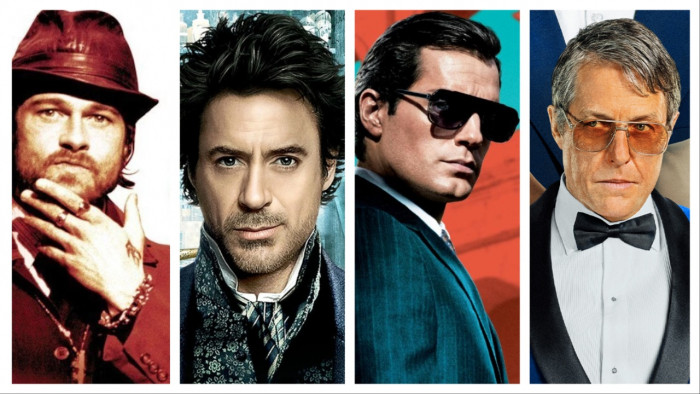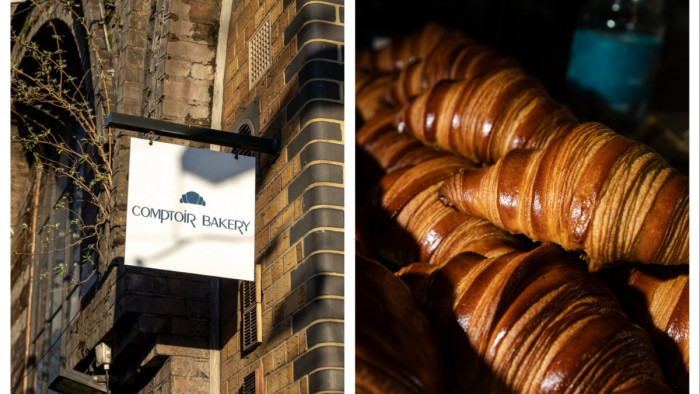What does the rise of new feminism mean for old-fashioned male gawping? David Whitehouse examines the cultural shift in modern masculinity...
There’s a word you don’t hear much nowadays. In his BBC World Service documentary on the origins of words, Professor David Crystal describes ‘phwoar’ as “a sort of expression of enthusiastic [sexual] desire – usually by a man about a woman”. But that’s just a nice way of putting it. You might say it’s the onomatopoeic sound of a flaccid penis rousing like a once stowed marionette. It’s a clown’s horn or a penny whistle. It’s a puerile relic of language that’s use is in decline, because one of the many bonuses of a move towards sexual equality is that men no longer have to loudly proclaim their masculinity by desperately vocalising finding women attractive. But when a long-standing method of male expression dies, what, if anything, of masculinity dies with it?
Feminism, after too long in the cold, finally seems to have broken down the door of the male psyche in a way that means we are adapting to a more feminised world not through force, but through choice. Call it ‘the Ryan Gosling effect’. In him, we have ourselves a self-proclaimed male feminist to which we can finally aspire. Our attitudes are shifting.
It’s why Seth MacFarlane’s “We saw your boobs” schtick at the Oscars was so widely criticised. It felt decades out of date. It felt like the old us. It certainly didn’t represent a generation of men who understand the need for the existence of something like Hollaback, a huge online community devoted to ending street harassment that lets you use your smartphone to document, map and share incidents, like a futuristic perv detective.
Then there’s the wider impact of the ‘No More Page Three’ campaign. But are the Gosling-inspired legion of ‘male feminists’ really out for equality, or has the ‘male gaze’ simply become a social taboo men are bending to adhere to? And what does it mean when we do?
Don’t Look Now
“I’m not sure it is the male gaze as such that is taboo, but perhaps the behaviours that went with it,” says Ruth Halliday, professor of gender and culture at the University Of Leeds. “Whistling, leering and making comments have pretty much dropped out of normal public life. In addition, where that gaze is exercised it is also being matched. Women are exercising their own gaze – especially when in groups of confident young women out on the town – and this can be fairly terrifying for some men. So there has been a kind of levelling of the gaze because it is no longer uni-directional.” Can something with such steeped history simply disappear?
Cliché dictates that it was shouted from building sites, but in truth ‘phwoar’ could be used anywhere by anyone to objectify women, like in this quote from The Sun in 2002: “But gazing at busty Sam he must have been thinking it was more like twenty-phwoar.”
But ‘phwoar’ was a word of the Eighties. It, and the behaviour we relate to it, existed in variant forms long before that for hundreds of years. To avoid fastidiously detailing how men in medieval Britain used to get together to objectify women, which will probably be the plot of an ITV sitcom soon anyway, we’ll start in the Sixties where it was all helpfully recorded forever in pop culture.
Sid James loudly chuckled ‘“Cor blimey” whenever he saw someone’s cleavage in a Carry On… film. Breasts transformed Sid into a witless honking goon. It was a way of defining masculinity. This was the whole purpose. Not to attract women like a hooted mating call, but to inform other men of our virility and libido by quacking whenever we saw a hint of feminine sexuality like an alarm set off by lady’s bums. It was a male bonding ritual that ultimately came at women’s expense – and that was only at its best. At its worst the gawping and name-calling would demonstrably encroach on the rights that women had not yet been fully given.
By the early Seventies, as more women entered traditionally masculine arenas of employment, this behaviour was part of the social lexicon of the workplace. Recently, the news has reminded us how difficult it was for women then to get through so much as a meeting without inappropriate sexual suggestion or fondling taking place. And that was just in the light-entertainment department of the BBC. Who knows what it must have been like on a packed commuter train.
Honourable mention should also go to the actor Robin Askwith in the Confessions Of… series of films, whose oeuvre encapsulates the attitude of the times in the image of a man howling at a woman in a nightie through her bedroom window while delivering milk. Men, it seemed, were incapable of restraining themselves.
Changing Times
By the Eighties, men heckling women in the street had become a trope, shorthand for public displays of a sexual power struggle. Sexual equality in the workplace barely existed by modern standards. In some, women were treated less as colleagues, more as moving interactive innuendo mannequins whose bodies were matters of public discourse.
Sexual harassment, though rife, was only just beginning to appear on the wider agenda. Many workplaces didn’t even have procedure in place to deal with such complaints, and that was if the women involved had been brave enough to complain at all. In a male-dominated professional landscape, this understandably wasn’t always the case. This isn’t to say that all, or even a majority of men, were responsible. It is to say that the climate was one where this was seen as a largely acceptable form of male expression.
In the Nineties, men’s magazines let groups of men ogle women together without women even being present. Angered feminists would be met with the argument that gawping at pictures of glamour models in lingerie with a cheeky ‘oo-er missus’ wink was little more than a throwback to the seaside postcard humour the British like to cling to. And maybe this was a fair point. But soon the supposed cheek of it all faded into something more crass.
Men’s magazines developed an Oedipal obsession with breasts. Readable content was a waste of space for pictures of more breasts. They became catalogues of female flesh, endless pictures of breasts often not even featuring the face of the woman they were attached to, desexualised to the point where leafing through a men’s magazine was like looking into a large tank full of jellyfish. And just as arousing.
But it couldn’t last forever. Equality meant more than adjusting pay scales or relaxing the rules on who could enter which part of the House Of Commons. It meant men shifting their behaviour, opinions and attitudes to show not just a respect for women as our equals, but feminism as a cause for supporting and objectification as a source of revulsion.
We’re not there yet. Despite the amassed names on an online petition, every day you can still find a picture of a topless Page 3 woman seamlessly positioned next to a story about a family of four killed on the motorway. The existence of Hollaback is proof that men still heckle women in the street all over the world, all of the time. There will, sadly, always be w*nkers.
Paul, a 33-year-old carpenter from London, who we’ll hasten to add isn’t a w*nker, says, “It might disappear from an office environment but it will still continue, I reckon, at least in manual labour. It’s part of the social fabric of a building site. For better or for worse. I suppose it’s a way men bond. Which probably says something about men in general.”
The F-Word
So is such behaviour only in decline where it can be policed? That makes many male feminists simply canny operators, improving their table manners for show but still feeding scraps to the dog when nobody is looking. Aspiring to the Ryan Gosling model is very different to simply imitating it. As anyone in possession of an off-white scorpion motif jacket that makes them look like Biff Tannen will attest. Raj, who is 31 years old and works in sales, agrees. “Men will always talk about women in those terms when women are not around. Just as women will talk about men differently when we’re not around. It doesn’t belong in the workplace, but it won’t be that easy for some people to leave behind. It’s a bad part of culture and they tend to stick around until entire generations raised on it have gone.”
Either way, new-feminism, or post-feminism, whatever you want to call it, is a potent force that has helped men to reassess how they conduct themselves. Feminism once more seems a welcome cause célèbre. It’s in the astronomic book sales of Caitlin Moran’s How To Be A Woman and Tina Fey’s Bossypants or the editorial of our sister magazine Stylist. It is, as it should be, all around us. We are adjusting to a more feminised world, allowing our social mores to be realigned.
We’re simply moving on in how we define our masculinity.
“Most men are living fairly comfortably within a feminised world, with masculinity being reshaped and repackaged to include expressing emotions, albeit carefully, taking care with their appearance, and caring more explicitly for children, parents and partners,” says Brendan Gough, professor of social psychology at Leeds Metropolitan University. “But we should also be careful about accepting that we now live in a feminised world – women still earn less than men, are more likely to be primary caregivers and to work part-time. Men are still more favoured than women, and masculinity is a flexible resource that can be reworked to suit contemporary situations.”
However, if we are changing then we should look at the adjustments we’re making. Are men becoming more inhibited? What happens when society outgrows an outmoded form of self-expression that defined at least a tiny unfortunate part of us?
“I’m not sure anything has been lost,” says Professor Gough. “The opportunities for men to take up historically feminised positions and practices are there, and to some extent modern society requires men to be more emotionally intelligent, but men can still choose to minimise or avoid feminised behaviour. These days, men, especially younger men, work and socialise with many female colleagues and count women among their best friends, with any sexual element absent or perhaps taken up jokingly.”
“I walk past building sites now without feeling the need to button up my jacket,” adds journalist Tracy Ramsden. “Perhaps it’s a feminist breakthrough, or the demise of lad culture, perhaps it’s fear of a sexual harassment court case, perhaps it’s the simple fact that most intelligent men today wouldn’t be best pleased if their girlfriend, wife, sister or mother was ‘tooted-up’ in the street. So they’ve realised it’s just a bit, well, off.”
Perhaps it’s a collision of all these factors. It’s awful to have to admit that it took moves in sexual harassment legislation to, in part, make us change our ways. It means that as a gender we’ve been creeps and jerks and weirdos. But we’re sorry. We don’t want or need to stand outside the window any more, holding a bottle of milk and howling at the moon. We looked a bit stupid, for a start, before we even get to how it also wasn’t fair. ”Some of these behaviours were actually bad for men,” suggests Professor Halliday. “Maintaining ‘hard’ masculinity was a struggle and a constant pressure to perform or live up to a role.”
And that’s how these behavioural shifts should be seen. Not as an aspiration. Not as a duty. Not as a chore. As liberation. Sexual equality is fundamentally simple, and the way we see it should be. It’s not just about liberating women. It’s about liberating men, too.










